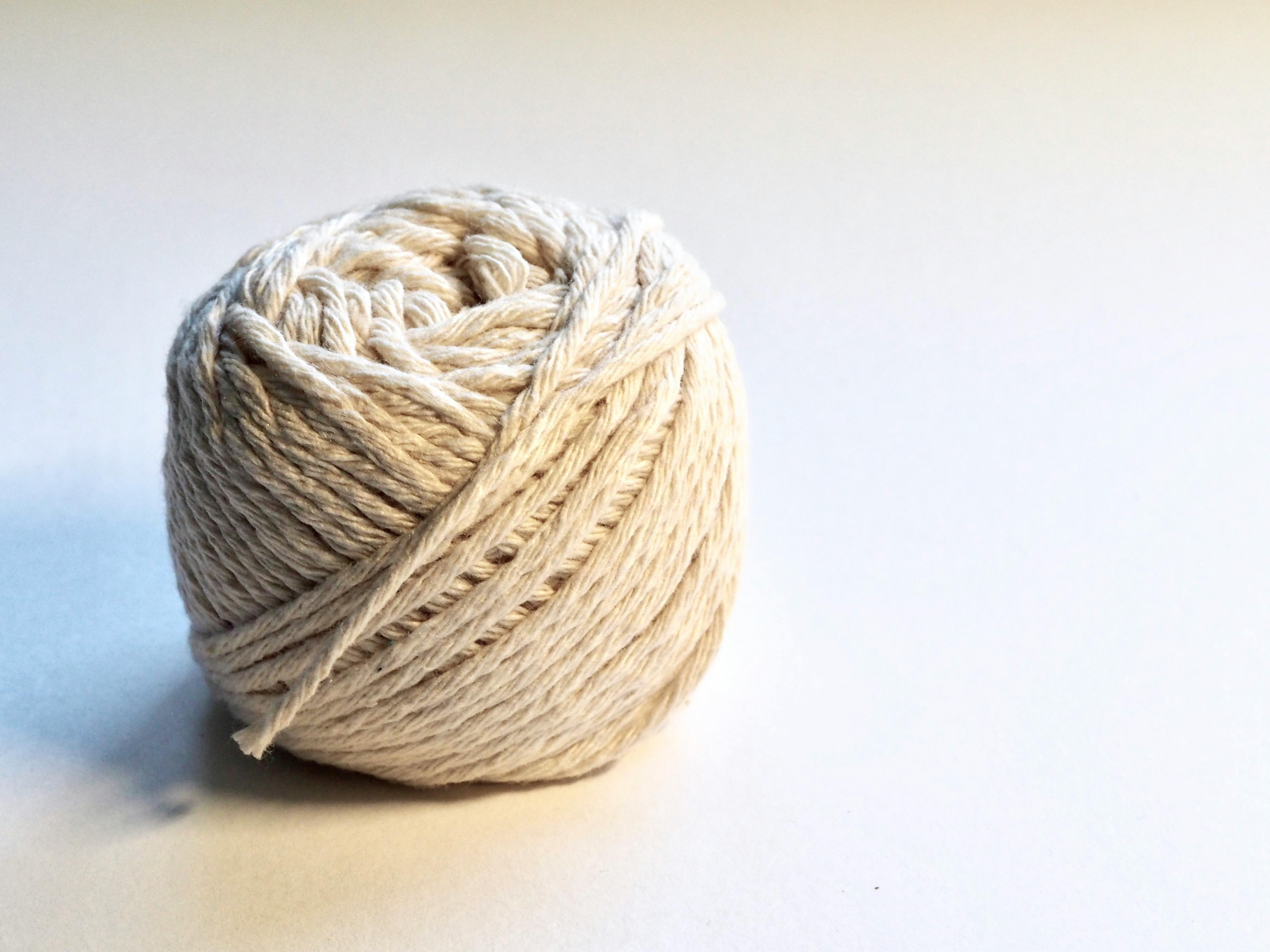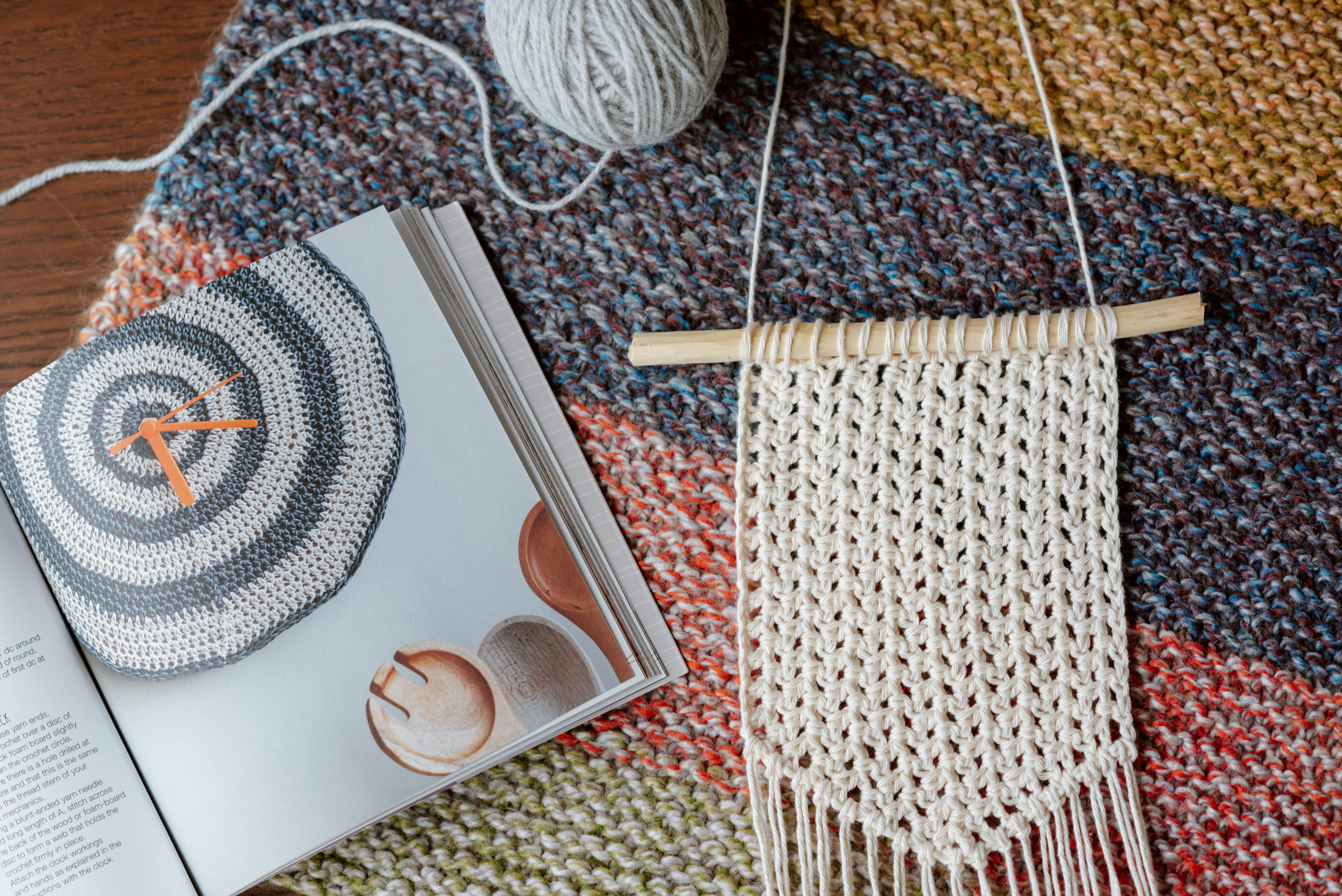Joining a new ball of yarn can seem like a daunting task when you are a beginner knitter or crocheter. However, it is an important skill to master and can be done relatively easily with the right technique. In this guide, we will cover the basics of joining a new ball of yarn to ensure that your project looks neat and professional.When joining a new ball of yarn, it is important to ensure that the ends are securely joined together. This can be done by weaving the two ends together in a figure eight pattern, or by tying them together in a knot. Additionally, it is important to pull the yarn firmly to make sure it is not too loose or too tight. If you are knitting with multiple colors, you may want to tie the yarns together at both ends before beginning your project. This will help prevent tangling and ensure that your colors stay separate from each other.
Preparing the Yarn for Joining
Joining yarns together is an essential skill when knitting, crocheting, or weaving. It is important to ensure that the yarns are properly prepared before joining them together. This will help to ensure a neat and secure join that won’t come undone easily.
The first step to prepare the yarn is to make sure it is free from any knots or tangles. Take the time to gently undo any knots in the yarn and untangle it if necessary. If you are joining two different colors or textures of yarn, it is a good idea to remove any knots from both strands before joining them together.
The next step is to make sure that both ends of the yarn are even. Take a few extra seconds to measure out the length of each strand and trim off any excess material so that they are of equal length. Once this is done, you can begin joining the strands together.
Finally, carefully comb out any fuzz or debris from both strands before joining them together. This will help ensure that they stay firmly joined once they have been connected. Make sure not to pull too hard on either strand during this process as this could weaken the fibers of the yarn and make them more prone to breakage over time.
Once all these steps have been completed, your yarn should be ready for joining. With a bit of practice, you’ll soon be able to join two strands of yarn quickly and securely with ease!
Splicing Yarns Together
Splicing yarns together is a great way to join two different colors of yarn without having to tie the ends into knots. It can also be used for joining multiple strands of yarn together when you want to create a thicker fabric. The technique is simple and straightforward, but there are a few steps you should follow in order to ensure that your splices remain secure.
First, make sure that the ends of the yarns you are joining are cut cleanly and evenly. If not, it can be difficult to get the splice to hold properly. Next, hold the two strands parallel with each other and separate them slightly where they will be joined – about an inch apart. Gently twist each strand in opposite directions until they start to twist around each other. Then, carefully pull each strand away from each other until the twist tightens and holds the splices together.
Once your splices are secure, it’s important to remember that they won’t be as strong as if you had tied them into knots. As such, it’s best to use this technique for projects where you won’t have too much strain on the yarns – such as hats or scarves. However, if done correctly, splicing is a quick and easy way to join two strands of yarn together without having to worry about bulky knots or fraying ends!
The Russian Join Method
The Russian join method is a technique used by knitters and crocheters to seamlessly join two strands of yarn. This method is used when you are working with two different colors of yarn or when you need to add a new ball of yarn to your project. It produces a neat, virtually invisible seam that won’t snag or unravel. This technique is also known as the Russian stitch, Russian knot, or magic knot.
To create the Russian join, you will need two strands of yarn and a crochet hook or tapestry needle. Start by threading one end of each strand through the needle or hook. Then, take both ends and tie them into an overhand knot. Pull the knot tight to secure it, then gently tug on each strand until the knot disappears into the middle of the yarn strands. This will create a small loop at one end.
Next, thread both ends through this loop and pull them tightly until they are taut against each other. Make sure that both strands are pulled evenly so that there won’t be any gaps between them once they’re joined together. Finally, cut off any excess yarn and trim the tails close to the join so that it won’t be visible when you use it in your project.
The Russian join method is an easy way to seamlessly transition between different colors of yarn without any visible seams or knots in your finished work. It can also be used to attach new balls of yarn if you run out while working on a project, eliminating the need for weaving in extra ends later on. Whether you’re knitting a scarf or crocheting an afghan, this technique can make your projects look smooth and professional-looking every time!
The Magic Knot Method
The Magic Knot method is a unique technique used to tie two ends of a rope together without having to use any knots or tools. This method is often used in mountaineering and other outdoor activities, as it allows for quick and easy tightening and loosening of the rope. The Magic Knot method involves wrapping the rope around itself several times and then tying off the loose ends with a simple overhand knot. This creates a secure connection that is easy to adjust and tighten or loosen as needed. The Magic Knot method is particularly useful for creating tension lines or securing equipment in place on a mountaineering expedition. It can also be used for other applications, such as lashing poles together for shelter building or tying items together securely in luggage. The Magic Knot method is an easy, reliable way to join two pieces of rope without having to worry about any complicated knots or tools.

Weaving in the Ends
Weaving in the ends is a very important part of knitting and crocheting projects. This process is done to secure any loose yarn ends that are leftover after a project is complete. Weaving in the ends helps to keep the project from unraveling and ensures that it will last for years to come.
The best way to weave in the ends is to use a tapestry needle with a blunt point. This type of needle slides easily through the fabric without causing any damage or snagging, unlike a regular sewing needle. Start by threading the loose yarn end onto the needle, then use it to carefully weave through several stitches on both sides of the project. Make sure that you don’t pull too tight as this can cause gaps or ripples in your fabric. Once you have woven through several stitches, cut off any excess yarn and continue with your next project!
For those who prefer an even more secure method, there are several ways to knot the yarn before weaving it in. One way is to tie an overhand knot with two strands of yarn, then weave one strand across several stitches and tie another knot on top of it. Another option is to make a series of tiny knots along one edge of your project before weaving in the end. Both methods will help ensure that your project stays secure for years to come.
No matter which method you choose, weaving in the ends is an important step when finishing off any knitting or crochet project. Taking this extra time can help ensure that your hard work lasts for many years!
Creating a Crochet Slip Knot
Creating a crochet slip knot is an essential skill for any crocheter. A slip knot is the first step in working any crochet project, and it can be done quickly and easily. To create a slip knot, start by making a loop with the yarn, leaving about four inches of yarn below the loop. Then wrap the yarn around your index finger, bringing the end of the yarn up through the center of the loop. Pull gently on both ends of the yarn to tighten and secure the slip knot. Once you have created your slip knot, you can slide it onto your crochet hook and begin working your project.
When creating a crochet slip knot, it is important to not pull too tightly on either end of the yarn. This will cause your work to be too tight and difficult to work with. Additionally, make sure that when you wrap your index finger with yarn, there are no gaps or openings that could cause your stitches to unravel while you are working. With practice and patience, creating a crochet slip knot can become second nature for any crocheter!
Knitting with Two Strands of Yarn
Knitting with two strands of yarn can produce a variety of interesting effects, from creating thicker fabrics to adding texture. It is also an easy way to increase the size of the stitch, making it possible to create larger items such as sweaters, blankets, and scarves. When working with two strands of yarn, it is important to remember that each strand will require its own set of needles and should be worked independently. This means that each stitch needs to be knit separately for each strand in order for the pattern to be consistent.
It is also important to note that when working with two strands of yarn, the gauge or tension may be different than when using a single strand. The tension should be kept consistent in order for the fabric to look even and uniform. To keep the tension even, use a smaller needle size than is recommended by the yarn label and always check your gauge after a few rows.
When knitting with two strands of yarn, it can help to use one strand as a “guide” while knitting each stitch. This helps ensure that both strands are consistently worked and prevents any lumps or bumps from forming in the fabric. It may also help to knit from the same end; this will keep both strands even in length and reduce tangling while knitting. Additionally, if you plan on carrying both strands together throughout the entire pattern, make sure they always remain untwisted; this will ensure that your stitches look even on both sides of the fabric.
Knitting with two strands of yarn can create beautiful projects but it does require some extra thought and attention in order for everything to turn out correctly. With patience and practice though, anyone can learn how to successfully work with two strands of yarn!

Conclusion
Joining a new ball of yarn is a simple process that can be done in a few easy steps. All you need is the yarn, a pair of scissors, and your knitting needles. First, cut the end of the yarn where it has been tied off. Then, thread the loose end onto your needle. Finally, pull the new ball of yarn through the loop to join it to your work.
The process for joining a new ball of yarn is quick and easy. It’s important to remember that you should always join at least six inches away from where you plan to start knitting so that your work doesn’t become tangled or knotted up. With a bit of practice, joining new balls of yarn will become second nature and will help make your knitting projects go more smoothly.
Adding extra balls of yarn to your project can add color and texture to any item you’re working on – whether it’s a scarf or an afghan! Joining them quickly and easily with these simple steps will help ensure that your knitting project looks great when it’s done.




